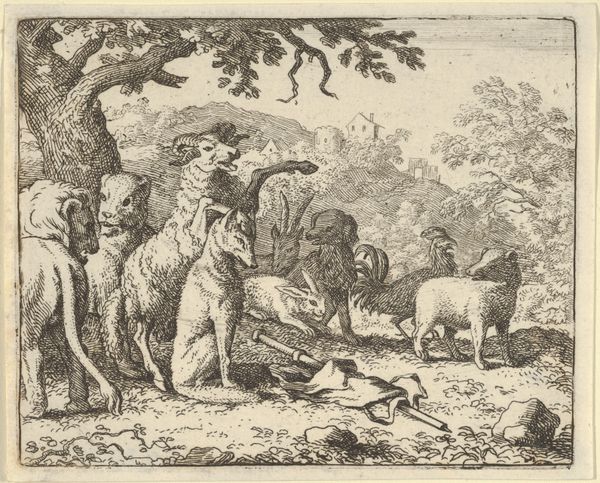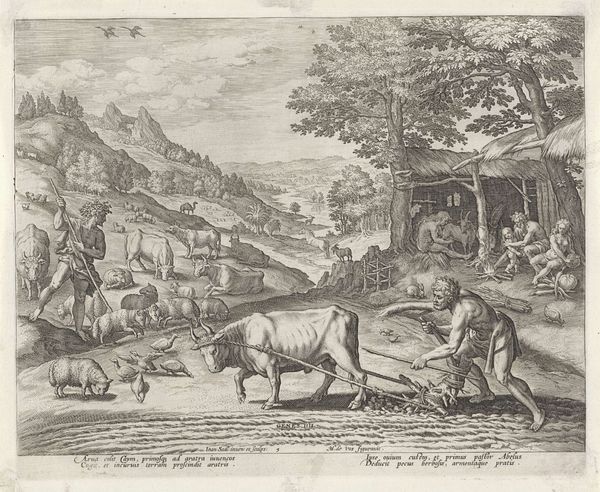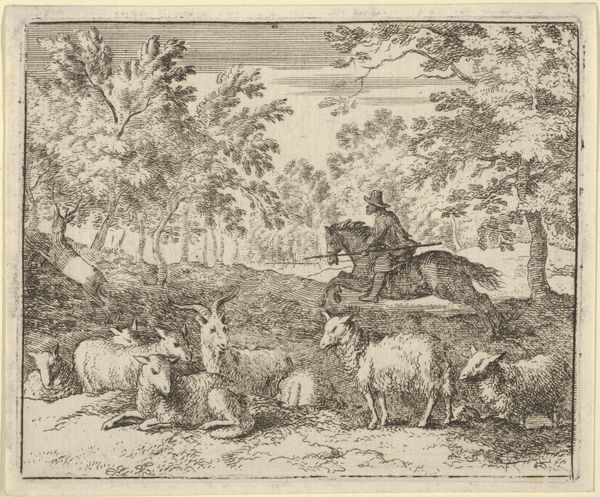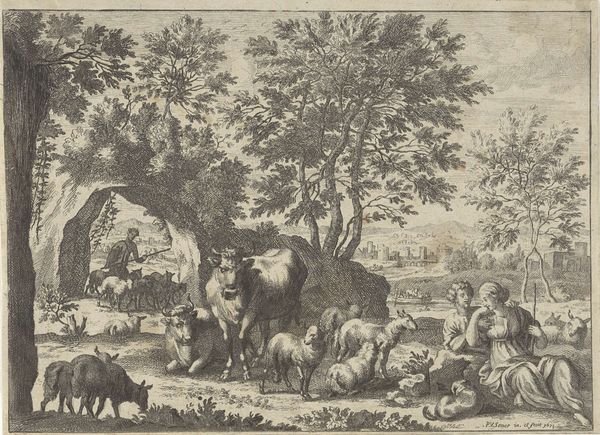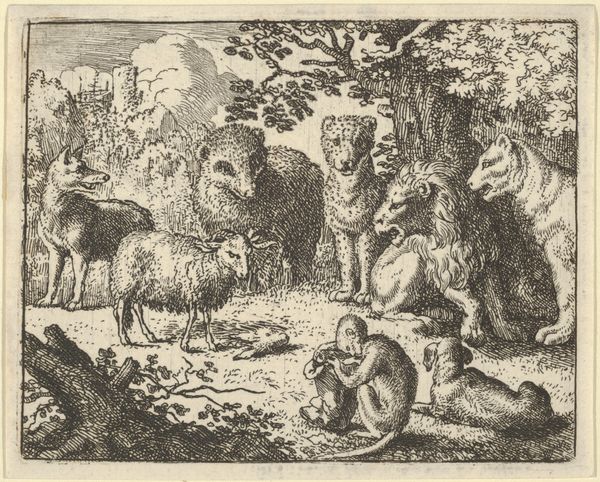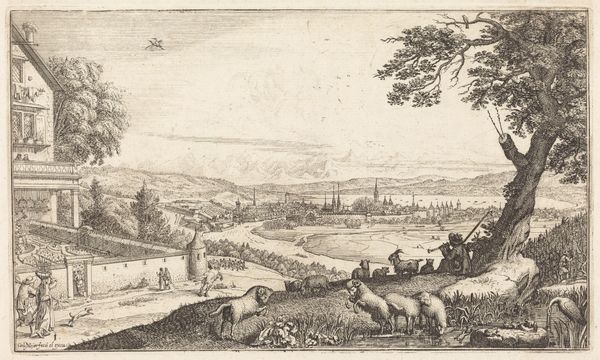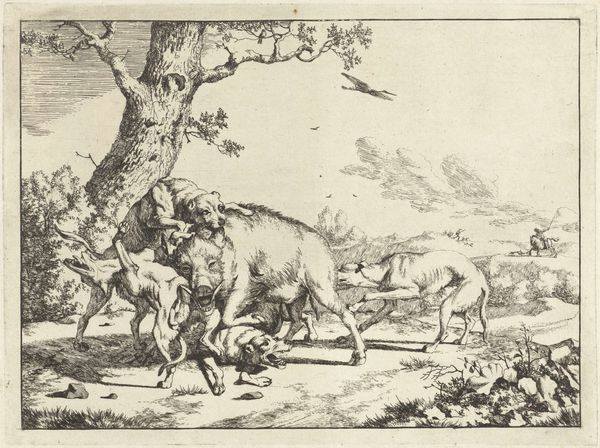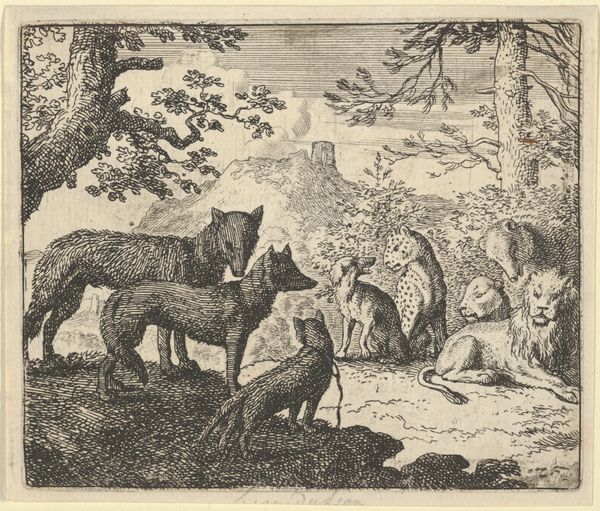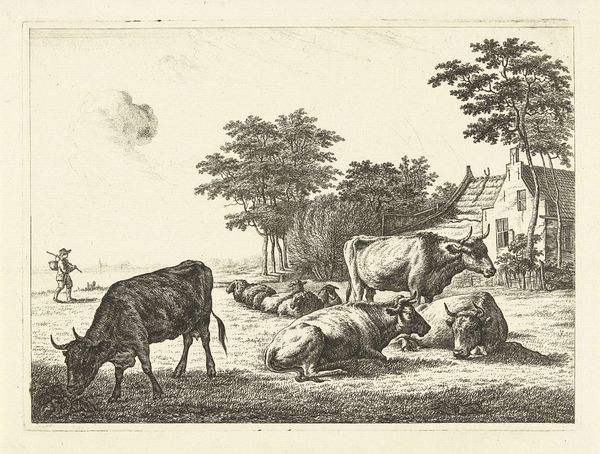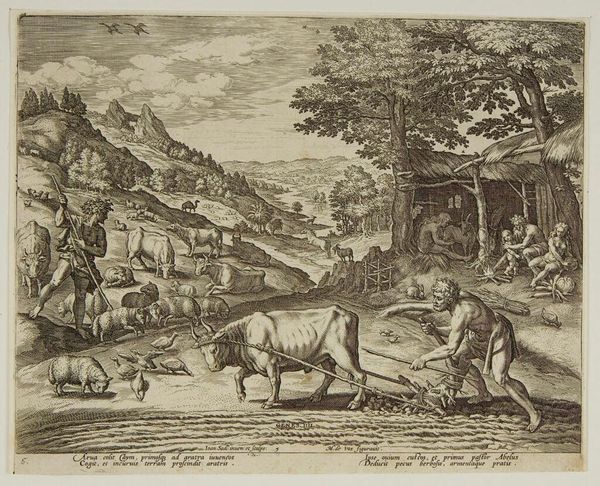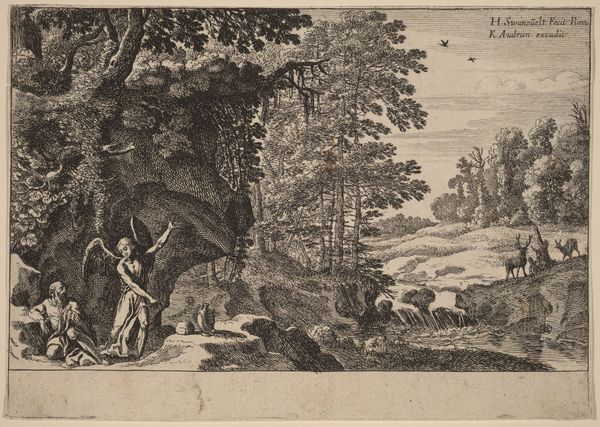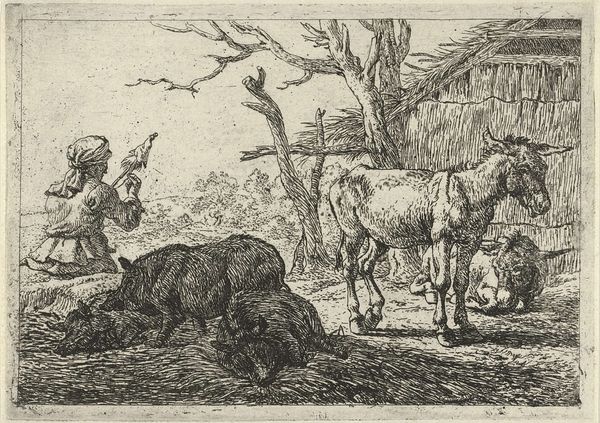
print, etching
#
narrative-art
#
baroque
# print
#
etching
#
landscape
#
figuration
Copyright: National Gallery of Art: CC0 1.0
Curator: The artwork before us, an etching crafted by Allart van Everdingen, probably between 1645 and 1656, is titled "Reynard Blinds the Wolf in One Eye." It’s quite small, rendered in the baroque landscape style. Editor: Intriguing! The density of lines really throws me off. Is this chaos, violence, or a rather picturesque little woodland scene? The dark figures in the front suggest something more sinister at play, yet in the distance there's a delicate suggestion of a village or town. Curator: That duality is central to the print. Van Everdingen was, in the mid-17th century, contributing to a longer visual tradition of Reynard the Fox stories. He tapped into a Northern European obsession with these fables that explored themes of trickery, social satire, and justice, with animals as thinly veiled human analogues. Editor: So this isn’t simply a quaint animal narrative? The story itself must unpack larger societal conflicts, using animal characters to safely, yet pointedly, challenge societal hierarchies? Curator: Precisely. In this specific scene, Reynard, a notorious trickster figure is blinding the wolf, Isengrim. The fox employs cunning and deceit to overcome the larger, more powerful wolf, highlighting not only the injustice perpetrated in society but also the methods individuals employ to resist oppression. Editor: I find the figures around them especially captivating. The rooster boldly struts between the bear and fox. To me, the rooster’s presence signifies an awakening, perhaps signaling an outcry that forces onlookers—the bear, the lion in the background, the whole "kingdom"—to acknowledge such underhanded deeds. Curator: It does invite consideration of social complicity. While seemingly a children's tale, its implications extend beyond simplistic morality, urging introspection into our roles within systemic injustices. Its charm also relies on its commentary of human behaviors. Editor: Agreed! This tiny etching invites reflection on historical narratives, exposing layers of meaning beneath a deceptive surface. The animals stand not merely as characters, but also as emblems, sparking critical thought concerning power, justice, and individual autonomy, even today. Curator: For me, it encapsulates how art of any scale provides powerful social commentary, shaping our understandings and actions regarding inequalities. It's important for museums to amplify and explore the public role of art for it to remain relevant.
Comments
No comments
Be the first to comment and join the conversation on the ultimate creative platform.
